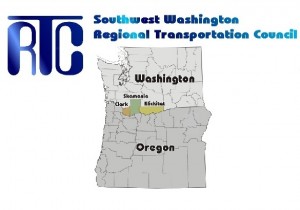As the Columbia River Crossing Light Rail Tolling project (CRC) moves from its initial development stages into acquisition of permits and construction financing, public opposition to the proposed construction project shows absolutely no signs of abating.
The Southwest Washington Regional Transportation Council (RTC) began its Mar. 23 workshop on the CRC by speaking directly to the project’s numerous detractors.
“Any project these days, small or big, just has more controversy than any of us would ever seem to want to have,” said RTC Transportation Director Dean Lookingbill.
Despite public outcry for a project that can be scaled back or attacked piecemeal as funding is made available, the CRC remains committed to an all-inclusive, one-size-fits-all solution even though it struggles to secure the billions of dollars that its designs require. Present CRC strategies are woefully inflexible and fundamentally incapable of solving transportation issues incrementally.Central to this opposition is the CRC’s continued unwillingness to give serious consideration to more measured approaches such as those presented to Oregon Legislators, for instance, offering multiple bridge options that would allow transportation problems to be addressed incrementally as funding permits.
Lookingbill roundly dismissed this multi-bridge plan, saying, “The data-led analysis that has been conducted over the years has consistently shown that while the concept of additional river crossings either to the west or to the east of our I-5/I-205 facility provide additional development opportunities, they really don’t solve the set of interstate bridge problems that are being addressed in the CRC.”
In response to mounting requests for “a more concrete phasing plan,” CRC Project Director Nancy Boyd explained that infrastructure designed to “keep traffic flowing” on I-5 during construction “could be in place for some time.”
While such reliance on temporary transportation routes might indeed buy the CRC more time to secure funds and complete construction in a more gradual manner, it will do nothing in terms of promoting added value or practical transportation benefits.
Under the proposed construction packages outlined by the CRC, the public would see little or no concrete benefit from the project until 2020 and 2021 when Washington and Oregon interchanges are completed. The initial river crossing construction—scheduled to begin in 2013—will be essentially useless in the meantime, leaving taxpayers with a 1.2 billion-dollar “phase one” that Boyd describes as “not functional.”
In order to get any true value from the project as it currently stands, we must, according to Boyd “build the whole thing.”
After speaking to the Washington Trucking Association and other regional transportation interest groups, State Representative Paul Harris questioned the wisdom of building a river crossing without first attending to the infrastructure that will support it. If the new bridge—which will have more lanes and increased traffic flow—is simply “dropped” into the existing system of inadequate interchanges, congestion problems will only be compounded. “Trucks will be just sitting on a brand new beautiful bridge,” said Harris.
Unfortunately, the bridge project as it is presently being pursued by the CRC cannot accommodate putting interchanges first. “My simple answer to that,” said Boyd, “is that we wouldn’t see a whole lot of benefit.”
In the eyes of many, the CRC’s failure to allow for sensible incremental or phased construction is one of its most unforgivable drawbacks.
In the current economic climate of shrinking budgets and scarce government resources, is the all-or-nothing approach of the CRC a gamble that Washington and Oregon residents can truly afford?










